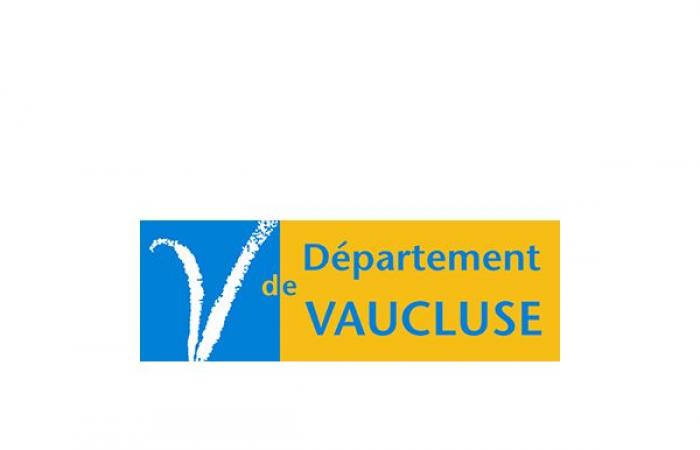A territory exposed to high risks of flooding
According to national statistics, the territory has one of the highest percentages of populations exposed to flooding.
In September 1992, the flooding of the Ouvèze caused several dozen victims and very significant material damage, particularly in the municipality of Vaison-la-Romaine without forgetting that same day, the flooding of the rivers in the South-West Mont-Ventoux which also caused devastation. Those of Lez and Eze in 1993 also left their mark.
Since these floods, Vaucluse has been subject to other catastrophic flood events, such as the floods of 2002 and 2003.
Watercourses managed by appropriate structures
The territories then organized themselves, with the support of the Department, for the gradual establishment of specialized public establishments, river and basin unions, to manage rivers and reduce the risk of flooding. Vaucluse was one of the first departments in France to see all its watersheds under public management. These organizations today cover all of the Vaucluse waterways.
A territory that must adapt to climate change
Climate change is leading to increased temperatures and longer, more severe droughts. Precipitation is less frequent but more intense, the availability of water resources is therefore modified.
Due to more severe summer drought, and under a median climate scenario, average annual stream flows, groundwater recharge and soil moisture will all likely be affected by a decrease of between 10 and 30 % around 2050.
Wetlands, excellent “climatic shock absorbers”
Vaucluse has just over 500 wetlands. They cover 12,262 hectares, or approximately 3.5% of the departmental area, two thirds of which are represented by watercourses: Durance (3000 ha), Aygues (900 ha), Ouvèze (800 ha), Rhône ( 700 ha) …
These wetlands are ecosystems that shelter exceptional biodiversity: multiple plant and animal species find shelter, food and reproduction areas there. Amphibians, insects, fish and mammals such as beavers and otters need them to ensure their life cycles, otherwise they will disappear.
Real “natural sponges”, wetlands slow down runoff water, help recharge water tables, and help support river flows. They filter water and store carbon. They are therefore valuable allies in facing the many current challenges, such as water resources or climate change.
Water, a precious resource exploited for human activities
In addition to surface water, Vaucluse is rich in groundwater. Strategic aquifers for drinking water supply, like the majority of surface resources, are located in the West and South of the department: the Rhône, Durance aquifers and the Miocene-Comtat groundwater constitute the large reservoirs. of drinking water to be preserved for the future.
In 2021, 79 million m3 were taken from groundwater, of which 70% was intended for domestic use, 20% for industry and 10% for agriculture.
Concerning surface water, 92 billion m3 were withdrawn, including 1% intended for domestic use, 13% for industry and 86% for agriculture.
Agriculture in Vaucluse is a major activity, with 31% of the department's surface area cultivated, the predominant crops being vines, arboriculture and market gardening. In a context of climate change, irrigation, which could be incidental for certain crops, now becomes essential. With more than 6,400 individual sampling points identified and collective networks managed by 44 Associations Syndicales des Propriétaires (ASP) and the Société du Canal de Provence (SCP), Vaucluse is a territory well served by water, with 21% land irrigated.
In 2021, 393 million m3 were withdrawn for irrigation, of which the origin is for more than 80% from the Durance, the rest coming from local watersheds, from the Rhône or even from the Miocene for a small part.
Water, a vulnerable resource…
Many sectors of the territory are regularly short of water: thus, the Calavon-Coulon which crosses the Apt plain, must face very marked drying out in the summer period combined with increased water needs.
A transport of water from neighboring territories is sometimes essential, as on the Plateau de Sault, where the latter still proves insufficient at times.
Finally, other sectors still remain dependent on deficit local resources and are very sensitive, such as in the north of the department in the Aygues, Ouvèze and Lez basins.
…and which must be managed collectively and sustainably
Sustainable water management, the encouragement of environmentally friendly practices and the protection and preservation of water resources have proven to be more than essential. These practices were accompanied by security via external resources from the Durance.
Final words: Rivers and aquifers constitute an essential source of fresh water, essential to human, animal and plant life. It still has to be of good quality to maintain ecological balance, ensure resource sustainability and support the various aspects of life on Earth. For several years, this water has become precious and its vulnerability as well as its scarcity should encourage us to preserve it further. This is our challenge: ensure everyone has access to quality water, not only for today, but for all generations to come.






